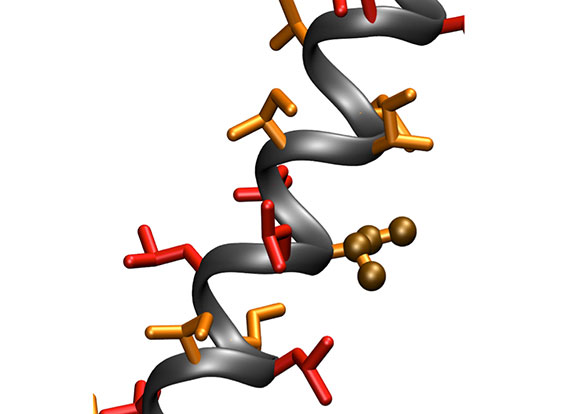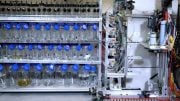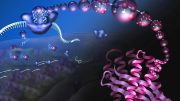
Yale scientists have developed simple new proteins almost devoid of chemical diversity that still play a surprisingly active and specific role in cellular function, causing cells to act like cancer cells.
Scientists from Yale University have created a synthetic protein that is active, despite its simplicity.
Yale scientists have developed simple new proteins almost devoid of chemical diversity that still play a surprisingly active and specific role in cellular function, causing cells to act like cancer cells, they report August 10 in the Proceedings of the National Academy of Sciences.
The wide array of protein function, upon which all life depends, is due to the specific sequences of large groups of amino acids that typically number in the hundreds or thousands. The side chains of these amino acids display considerable chemical diversity, giving rise to an enormous number of protein structures such as enzymes that carry out biochemical reactions and carrier proteins such as hemoglobin, which transport oxygen to our tissues.
Prompted by studies of a short viral protein that spans cell membranes and causes tumors, the Yale team devised a series of synthetic membrane proteins just 26 amino acids long. Remarkably, they report, they have even built these proteins from sequences of just two amino acids with very similar side chains. Despite this extraordinary simplicity, a tiny fraction of these sequences display biologic activity and can be isolated by genetic selection, said the study’s senior author Dr. Daniel DiMaio, the Waldemar Von Zedtwitz Professor of Genetics and deputy director of Yale Cancer Center.
“We have built the simplest proteins possible, and not only are they active, they are specific. They can find a single target in cells and activate it, resulting in uncontrolled cell growth,” DiMaio said. “We wonder if there are similar proteins in cells that have been overlooked because of their simplicity, some of which might cause cancer. It might be time to rethink what is considered an active protein.”
DiMaio added that synthetic biology efforts, including the development of active agents and potentially new drugs, could be advanced by insights gleaned from studying these simple proteins.
Other authors of this study are Erin Heim, Jez Marston, Ross Federman, Anne Edwards, Alexander Karabadzhak, Lisa Petti, and Donald Engelman.
The research was funded by a grant from the National Cancer Institute and support from Laurel Schwartz.
Reference: “Biologically active LIL proteins built with minimal chemical diversity” by Erin N. Heim, Jez L. Marston, Ross S. Federman, Anne P. B. Edwards, Alexander G. Karabadzhak, Lisa M. Petti, Donald M. Engelman and Daniel DiMaio, 10 August 2015, PNAS.
DOI: 10.1073/pnas.1514230112









Be the first to comment on "Newly Developed Simple Protein Plays Active Role in Cellular Function"